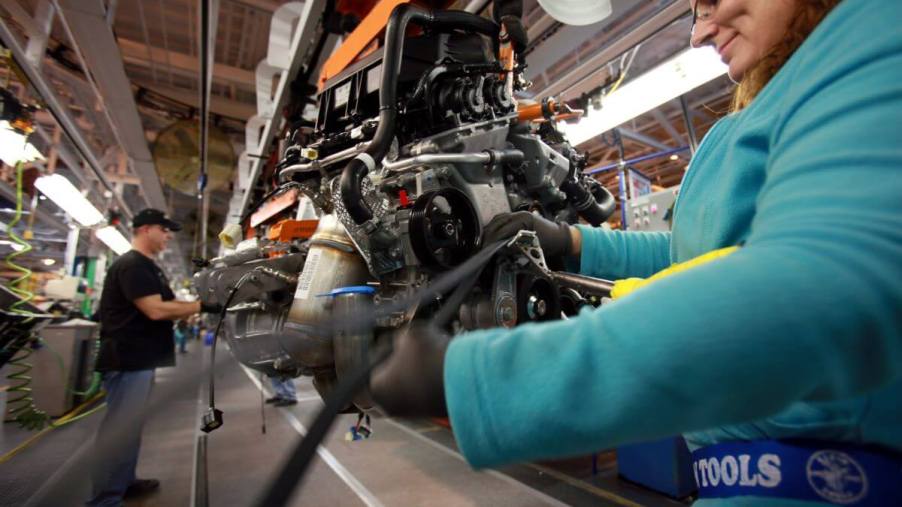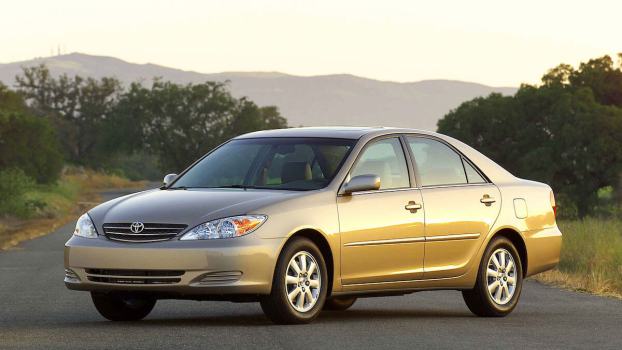
What Is a Car’s Timing Belt and When Should It Be Replaced?
Without timing belts, modern engines wouldn’t be able to run at all. Acting as a main maintenance component under the hood of most modern vehicles, a timing belt keeps all components of an engine running perfectly in time together. So, what exactly does a timing belt do? Have timing belts always been used in vehicles, and do they ever need to be replaced? Here is everything you need to know about timing belts and when to replace them.
What is a timing belt?
Timing belts are used to keep your vehicle running with all engine components in sync. According to Napa, a traditional, modern engine has a crankshaft and a camshaft. The crankshaft manages the engine’s pistons while the camshaft opens and closes the exhaust and intake valves in the cylinder head. With a timing belt used to link the crankshaft and camshaft, the engine’s pistons and valve actions work synchronously, ensuring valves are opening and closing at the perfect time.
Have timing belts always been used in cars?
For many years, vehicles did not use timing belts to ensure a vehicle’s engine was in sync. Instead, cars used timing chains, which resemble bicycle chains. Timing chains did the same job as timing belts but were much heavier, noisier, and worse off for performance. However, due to their durability, many economy cars and workhorse engines still use timing chairs. Unlike timing belts, timing chairs are made out of metal and will often last the vehicle’s entire life.
Some vehicles even experimented with having no timing belts or timing chains at all. GM’s infamous Iron Duke engine was initially released with the camshaft and crankshaft linked by a direct gear-to-gear mesh. However, this application was not well-loved, and this engine eventually was refined by adding a timing chain.
Do you have to replace your timing belt?
Yes, you need to replace your timing belt. According to AutoZone, most timing belts are made out of rubber, just like any other drive belt under the hood. Over time, these get worn and stretched and need to be replaced. Most manufacturers recommend changing your timing belt somewhere between 70,000 and 90,000 miles, although all vehicles are different. To know when you need to get your belt changed, you should consult your owner’s manual.
Alternatively, many older vehicles need their timing belt changed due to age. This is common in some collector vehicles like Ferraris, which use a traditional timing belt but are hardly driven as much as a commuter car. These high-end performance vehicles that are not driven very much need their belts changed every three to five years or so.
What happens if you don’t change your timing belt?
Catastrophic failure. No, really. In many older vehicles with non-interference engines, a timing chain or timing belt failing would lead to your car breaking down, but it could be fixed. With newer vehicles, precision manufacturing has led to many engines being built so precisely that a timing belt failing will instantly destroy an engine. Timing belts have led to manufacturers making more fuel-efficient and powerful engines than ever, so prompt service on these belts needs to be followed.
According to J.D. Power, a timing belt replacement costs around $500 to $1,000 to complete at a mechanic’s shop. If you wait until your belt breaks and damages your engine, you could see a $2,000 or more engine rebuild or total engine replacement. So, make sure you stay on top of your vehicle’s timing belt replacement schedule!




